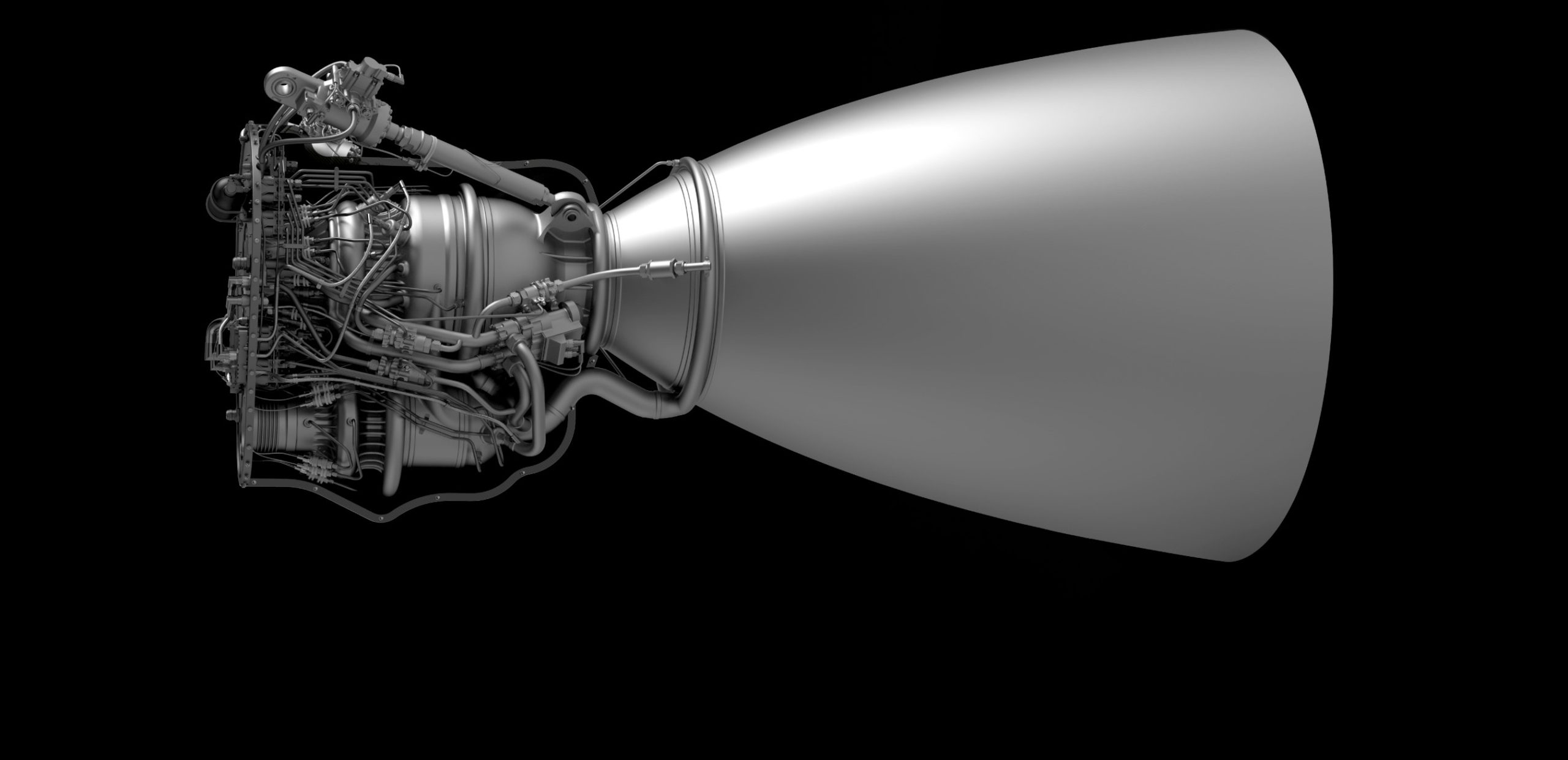
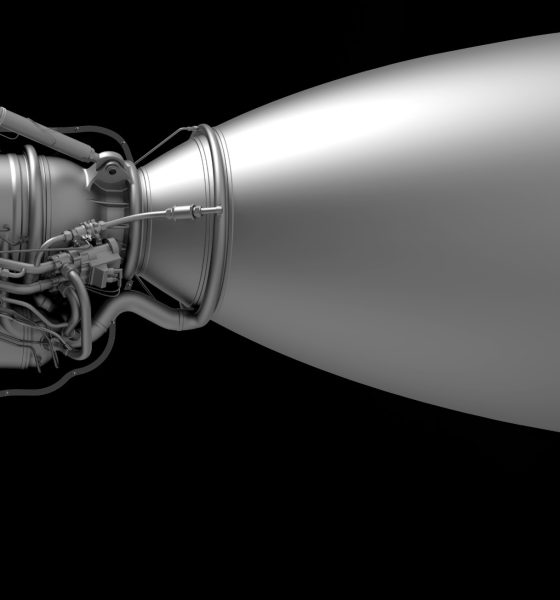
News
SpaceX’s Starship Raptor Vacuum engine plans laid out by CEO Elon Musk
Elon Musk says that SpaceX Starship engine upgrades are on track to begin static fire tests of a Raptor Vacuum variant as few as a “couple months” from now.
Designed to enable more efficient performance in thin atmosphere or vacuum, Musk admitted that the first version(s) of Raptor Vacuum (RVac) will likely be a compromise between efficiency and speed of development. Nevertheless, the faster SpaceX can prepare Raptor Vacuum for flight, the easier it will be for Starship to begin serious (sub)orbital flight tests.
As it turns out, SpaceX’s first and only official render of Raptor – published in September 2016 – showed the engine’s vacuum-optimized variant. In the years since, CEO Elon Musk has vacillated between keeping the vacuum engines as a central Starship feature and simply replacing them with regular sea level Raptors to expedite the spacecraft’s debut. The 2016 and 2017 vehicles featured a mixture of vacuum and sea-level engines, whereas Musk revealed a vehicle with sea-level engines only in 2018.
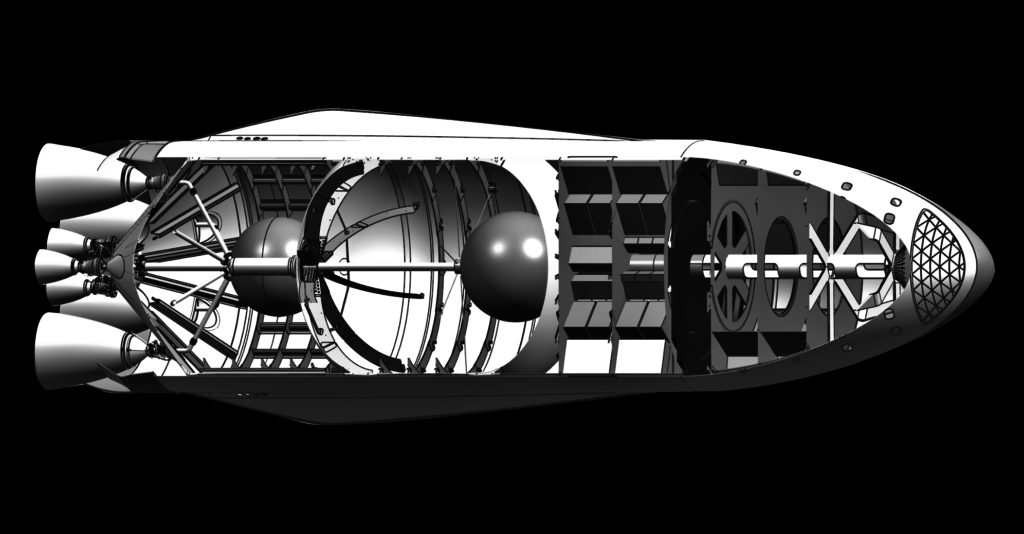
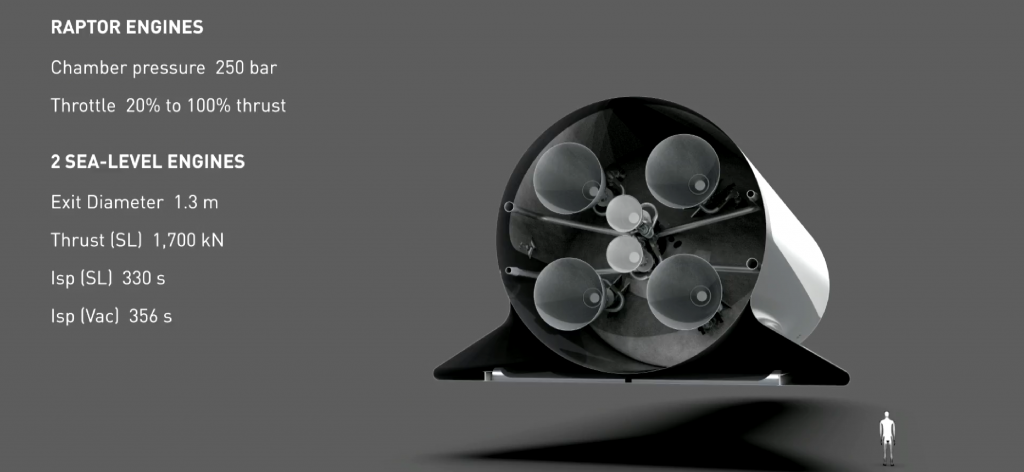
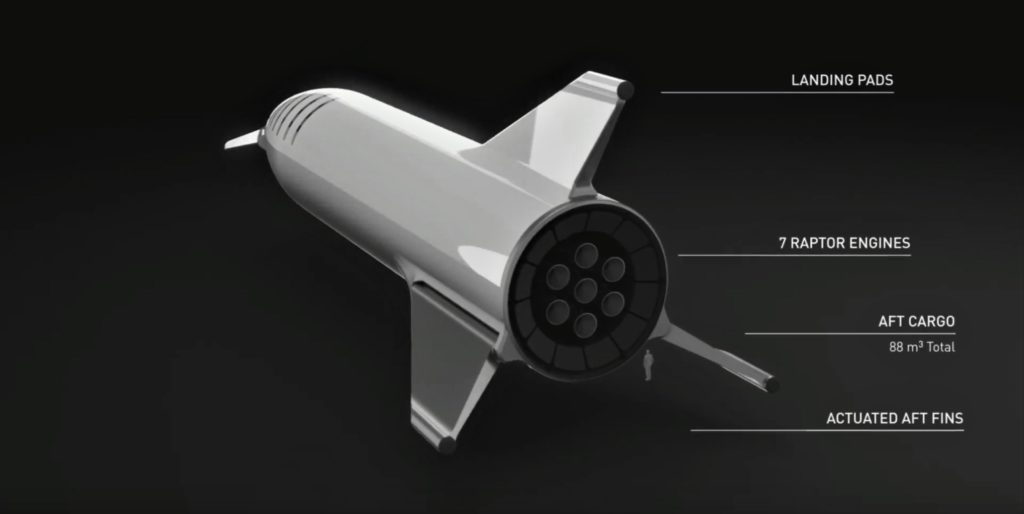
Perhaps less than a month after Musk’s September 2018 presentation, the SpaceX CEO made the decision to radically redesign the vehicle – newly christened Starship and Super Heavy – by moving from a carbon composite aerostructure to stainless steel. At first, the seven SL Raptors remained a part of the design, but Musk took to Twitter in 2019 to indicate that SpaceX had changed gears again and had reprioritized Raptor Vacuum development.
This came as a bit of surprise and it should go without saying that there’s a significant chance that Musk/SpaceX will oscillate in the opposite direction once again before Raptor Vacuum is actually ready for flight. This time, though, Musk has sketched out a development schedule and strategy that suggests SpaceX is much more serious this time.
Most notably, Musk claims that the first Raptor Vacuum prototype could be ready for static fire testing just a “couple months” from now, an immensely ambitious schedule for any large liquid rocket engine development program. Nevertheless, Musk did indicate that the “V1.0” Raptor Vacuum design would be significantly compromised and “suboptimal”, an intentional decision to prioritize the engine’s “speed of development”.
Even then, Musk believes that the first variant – featuring a shortened bell nozzle – could still be up to 12% more efficient than sea level Raptors and thus already 70-80% of the way to the physical limit of methane-oxygen rocket efficiency.
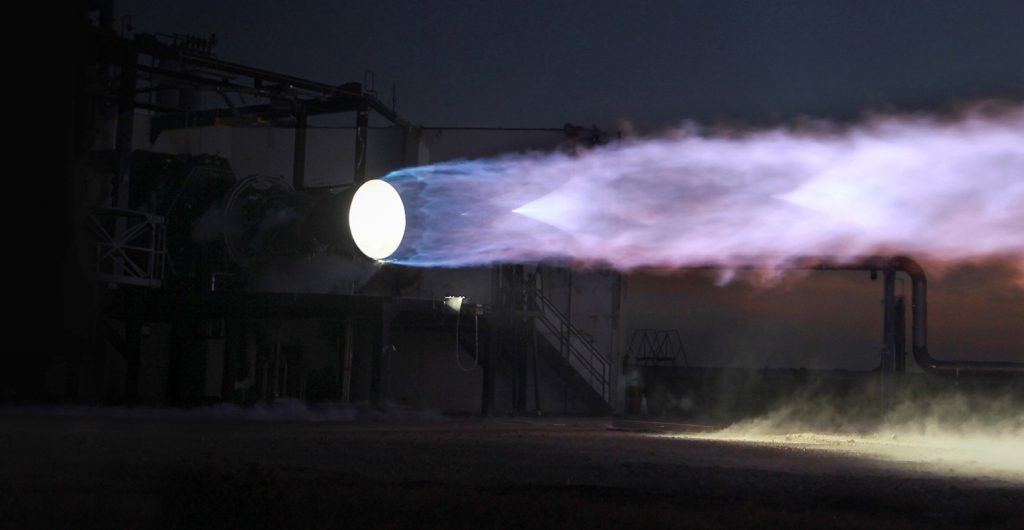
On a positive note, shrinking V1.0 Raptor Vacuum’s nozzle a bit from its nominal length will likely mean that SpaceX can static fire fully-integrated engines at its McGregor, TX test facilities, critical for speedy development. If not, the company has experience with alternatives through Merlin Vacuum, which can only be tested on the ground with its lengthy nozzle detached. This method just makes it dramatically harder to optimize a vacuum nozzle design, as full-scale, flight-like testing is nearly impossible if a given vacuum engine can’t be tested on the ground with said nozzle installed.
Vacuum engines need such large and unwieldy nozzles in order to make them as efficient as possible. In a very simplistic sense, a rocket engine nozzle directs the flow of superheated, ultrafast gases in order to squeeze as much momentum transfer as possible out of available propellant. The lower the pressure of the surrounding atmosphere is, the more those gases will expand immediately after leaving the nozzle – giant vacuum nozzles simply try to harness the additional momentum available from that extra expansion. This is why rocket exhausts appear to spread and thin out as launch vehicles reach higher and higher altitudes.
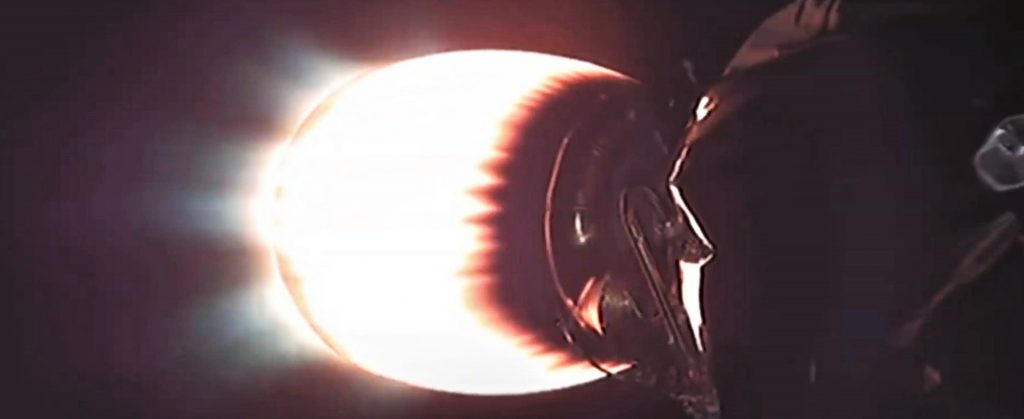
In this sense, the perfect theoretical vacuum nozzle is quite literally infinitely long. The job of vacuum rocket engineers is to find the perfect balance between that impractical theoretical perfection and the limits of real-world materials and dynamics. In theory, SpaceX’s sea-level Raptor engines have already been designed to operate in vacuum conditions, while the engine’s closed-cycle design and regeneratively (i.e. propellant) cooled nozzle should apply well to a vacuum design.
If SpaceX is lucky, there will be few roadblocks in the way of simply lengthening a SL Raptor-style nozzle and calling it a day, in which case it would be impressive but not all that surprising if SpaceX is actually able to begin RVac testing before the end of 2019. Once a rough V1.0 engine is in place, the process of optimizing efficiency can be done slowly and methodically, all while exploiting an unprecedented wealth of data from flight and orbit-tested Raptor Vacuum engines.
Check out Teslarati’s Marketplace! We offer Tesla accessories, including for the Tesla Cybertruck and Tesla Model 3.

Cybertruck
Tesla updates Cybertruck owners about key Powershare feature

Tesla is updating Cybertruck owners on its timeline of a massive feature that has yet to ship: Powershare with Powerwall.
Powershare is a bidirectional charging feature exclusive to Cybertruck, which allows the vehicle’s battery to act as a portable power source for homes, appliances, tools, other EVs, and more. It was announced in late 2023 as part of Tesla’s push into vehicle-to-everything energy sharing, and acting as a giant portable charger is the main advantage, as it can provide backup power during outages.
Cybertruck’s Powershare system supports both vehicle-to-load (V2L) and vehicle-to-home (V2H), making it flexible and well-rounded for a variety of applications.
However, even though the feature was promised with Cybertruck, it has yet to be shipped to vehicles. Tesla communicated with owners through email recently regarding Powershare with Powerwall, which essentially has the pickup act as an extended battery.
Powerwall discharge would be prioritized before tapping into the truck’s larger pack.
However, Tesla is still working on getting the feature out to owners, an email said:
“We’re writing to let you know that the Powershare with Powerwall feature is still in development and is now scheduled for release in mid-2026.
This new release date gives us additional time to design and test this feature, ensuring its ability to communicate and optimize energy sharing between your vehicle and many configurations and generations of Powerwall. We are also using this time to develop additional Powershare features that will help us continue to accelerate the world’s transition to sustainable energy.”
Owners have expressed some real disappointment in Tesla’s continuous delays in releasing the feature, as it was expected to be released by late 2024, but now has been pushed back several times to mid-2026, according to the email.
Foundation Series Cybertruck buyers paid extra, expecting the feature to be rolled out with their vehicle upon pickup.
Cybertruck’s Lead Engineer, Wes Morrill, even commented on the holdup:
As a Cybertruck owner who also has Powerwall, I empathize with the disappointed comments.
To their credit, the team has delivered powershare functionality to Cybertruck customers who otherwise have no backup with development of the powershare gateway. As well as those with solar…
— Wes (@wmorrill3) December 12, 2025
He said that “it turned out to be much harder than anticipated to make powershare work seamlessly with existing Powerwalls through existing wall connectors. Two grid-forming devices need to negotiate who will form and who will follow, depending on the state of charge of each, and they need to do this without a network and through multiple generations of hardware, and test and validate this process through rigorous certifications to ensure grid safety.”
It’s nice to see the transparency, but it is justified for some Cybertruck owners to feel like they’ve been bait-and-switched.
News
Tesla’s northernmost Supercharger in North America opens

Tesla has opened its northernmost Supercharger in Fairbanks, Alaska, with eight V4 stalls located in one of the most frigid cities in the U.S.
Located just 196 miles from the Arctic Circle, Fairbanks’s average temperature for the week was around -12 degrees Fahrenheit. However, there are plenty of Tesla owners in Alaska who have been waiting for more charging options out in public.
There are only 36 total Supercharger stalls in Alaska, despite being the largest state in the U.S.
Eight Superchargers were added to Fairbanks, which will eventually be a 48-stall station. Tesla announced its activation today:
North America’s northernmost Supercharger Fairbanks, AK (8 stalls) opened to public. https://t.co/M4l04DZ6B5 pic.twitter.com/zyL6bDuA93
— Tesla Charging (@TeslaCharging) December 12, 2025
The base price per kWh is $0.43 at the Fairbanks Supercharger. Thanks to its V4 capabilities, it can charge at speeds up to 325 kW.
Despite being the northernmost Supercharger in North America, it is not even in the Top 5 northernmost Superchargers globally, because Alaska is south of Norway. The northernmost Supercharger is in Honningsvåg, Norway. All of the Top 5 are in the Scandanavian country.
Tesla’s Supercharger expansion in 2025 has been impressive, and although it experienced some early-quarter slowdowns due to V3-to-V4 hardware transitions, it has been the company’s strongest year for deployments.
🚨🚨 Tesla Supercharging had a HUGE year, and they deserve to be recognized.
🍔 Opened Tesla Diner, a drive-in movie theater with awesome, Chef-curated cuisine
🔌 Gave access to Superchargers to several EV makers, including Hyundai, Genesis, Mercedes-Benz, Kia, Lucid, Toyota,… pic.twitter.com/yYT2QEbqoW
— TESLARATI (@Teslarati) December 10, 2025
Through the three quarters of 2025, the company has added 7,753 stations and 73,817 stalls across the world, a 16 percent increase in stations and an 18 percent increase in stalls compared to last year.
Tesla is on track to add over 12,000 stalls for the full year, achieving an average of one new stall every hour, an impressive statistic.
Recently, the company wrapped up construction at its Supercharger Oasis in Lost Hills, California, a 168-stall Supercharger that Tesla Solar Panels completely power. It is the largest Supercharger in the world.
News
Tesla shocks with latest Robotaxi testing move
Why Tesla has chosen to use a couple of Model S units must have a reason; the company is calculated in its engineering and data collection efforts, so this is definitely more than “we just felt like giving our drivers a change of scenery.”

Tesla Model S vehicles were spotted performing validation testing with LiDAR rigs in California today, a pretty big switch-up compared to what we are used to seeing on the roads.
Tesla utilizes the Model Y crossover for its Robotaxi fleet. It is adequately sized, the most popular vehicle in its lineup, and is suitable for a wide variety of applications. It provides enough luxury for a single rider, but enough room for several passengers, if needed.
However, the testing has seemingly expanded to one of Tesla’s premium flagship offerings, as the Model S was spotted with the validation equipment that is seen entirely with Model Y vehicles. We have written several articles on Robotaxi testing mules being spotted across the United States, but this is a first:
🚨 Tesla is using Model S vehicles fitted with LiDAR rigs to validate FSD and Robotaxi, differing from the Model Ys that it uses typically
Those Model Y vehicles have been on the East Coast for some time. These Model S cars were spotted in California https://t.co/CN9Bw5Wma8 pic.twitter.com/UE55hx5mdd
— TESLARATI (@Teslarati) December 11, 2025
Why Tesla has chosen to use a couple of Model S units must have a reason; the company is calculated in its engineering and data collection efforts, so this is definitely more than “we just felt like giving our drivers a change of scenery.”
It seems to hint that Tesla could add a premium, more luxury offering to its Robotaxi platform eventually. Think about it: Uber has Uber Black, Lyft has Lyft Black. These vehicles and services are associated with a more premium cost as they combine luxury models with more catered transportation options.
Tesla could be testing the waters here, and it could be thinking of adding the Model S to its fleet of ride-hailing vehicles.
Reluctant to remove the Model S from its production plans completely despite its low volume contributions to the overall mission of transitioning the world to sustainable energy, the flagship sedan has always meant something. CEO Elon Musk referred to it, along with its sibling Model X, as continuing on production lines due to “sentimental reasons.”
However, its purpose might have been expanded to justify keeping it around, and why not? It is a cozy, premium offering, and it would be great for those who want a little more luxury and are willing to pay a few extra dollars.
Of course, none of this is even close to confirmed. However, it is reasonable to speculate that the Model S could be a potential addition to the Robotaxi fleet. It’s capable of all the same things the Model Y is, but with more luxuriousness, and it could be the perfect addition to the futuristic fleet.








